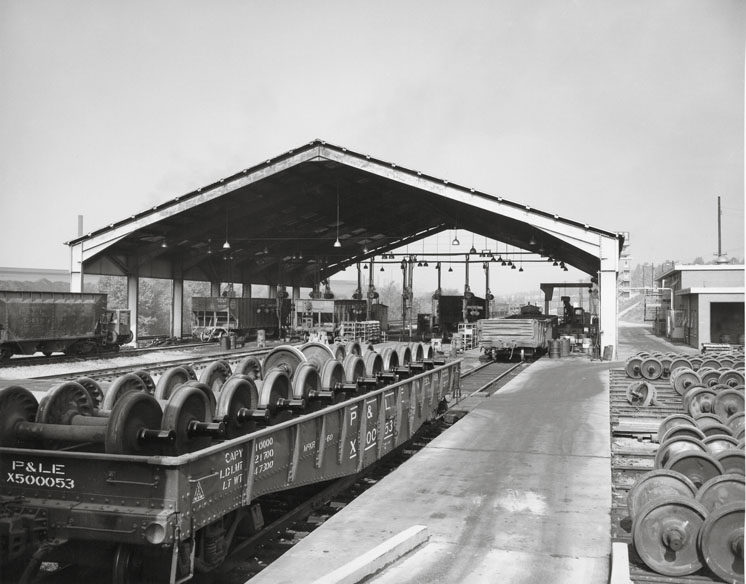
Car inspectors are trained to look for anything that’s wrong with a freight car, from damaged safety appliances to any broken or missing components. These problems are written up on bright- colored Bad Order Cards that are stapled onto a car’s tack boards so switch crews will spot them and route the car to the repair shop.
The shop in the picture was part of the Pittsburgh & Lake Erie’s Gateway Yard in East Youngstown, Ohio. It was an open-air operation with a roof covering just a portion of the work area. The workmen at this location had to be a tough bunch to perform their jobs during the winter months. A two-story building along the north side contained the shop offices, a tool room, the stores department, an air brake shop, a locker room, and an equipment garage.
Light car repairs are defined as a combination of servicing, minor structural repairs, and overhauls that can be completed within a day or two. Heavier damage, major repairs, and rebuilding jobs are sent on to a larger shop. In recent years, railroads have developed specialized running repair shops to avoid delaying loaded cars.
Here are some of the typical jobs which are done as running repairs:
• Repack solid-journal bearings or lubricate roller bearings
• Replace journal bearings
• Replace worn or damaged wheelsets
• Renew shoes, beams, and other air brake system parts
• Repair couplers, draft gear, uncoupling levers, and associated fittings
• Repair and periodic servicing of automatic air brake system components
• Repair or replace damaged door hardware, platforms, ladders, grab irons, steps, and other safety appliances
• Repair, patch, or replace carbody components or hardware
• Replace or patch interior lining or car floor as necessary to retain load
• Adjust or repair loading devices
• Adjust or reposition and secure shifted loads for further movement
Inbound bad-order cars are switched into groups that need similar repairs by placing them all on one track. The tracks leading into the shop area are fairly long so yard engines can continue to spot bad order cars into them.
Moving cars within the shop is often handled by a Trackmobile. These handy machines can move on the shop driveways and platforms and hydraulically shift to wheels to operate on the rails to reposition a few cars at a time.
From time to time, a Trackmobile operator can unlock and open a safety derail, come out of the shop to pick up a few more cars, and pull or push them into the work area. Then the derail must be restored to protect the workmen.
Most running repair shops are organized into work stations outfitted with all of the tools and materials necessary to complete a given job. For example, a shop which changes a lot of wheelsets may have more work stations outfitted with the heavy jacks needed to lift a car and modified forklifts to move the wheelsets or work on a truck.
Sometimes a shop track is assigned to work on a specific car type or handle a single type of repair. If numerous hopper repairs are common, a track may be set up as a mini-production line to speed the work. Another track may handle gondola floor repairs – a common problem in cars used to haul steel products.
A variety of small 4-wheel industrial tractors move from car to car carrying the tools and parts needed by the workmen. Other similar vehicles have hydraulic cranes to move and position heavier items like couplers.
A combination office and supply building is located adjacent to the work area. It includes a garage for on-site vehicle repairs, locker rooms, a tool crib, and parts warehousing for the various trades working outside.
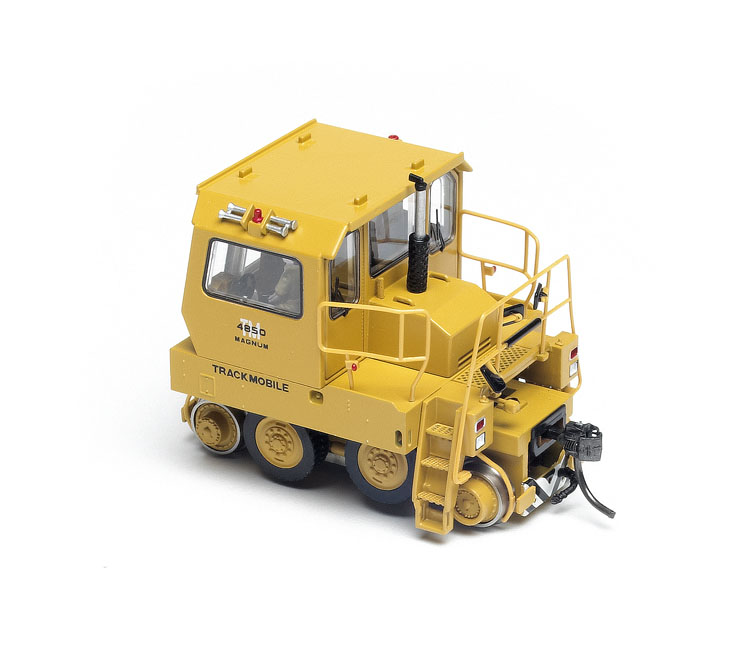
A roof is normally placed over the main work area to protect the workers from precipitation and the sun. This structure could easily be fabricated from styrene structural shapes and corrugated panels. The overhead air line and electrical conduits can be made from brass wire or styrene rod and tubing.
Paging through the Walthers catalog should provide plenty of detailing ideas and useful shop vehicles. Don’t forget to include a couple of company-owned pickups and light flatbed trucks. Preiser, Woodland Scenics, and other companies offer plenty of useful workmen.







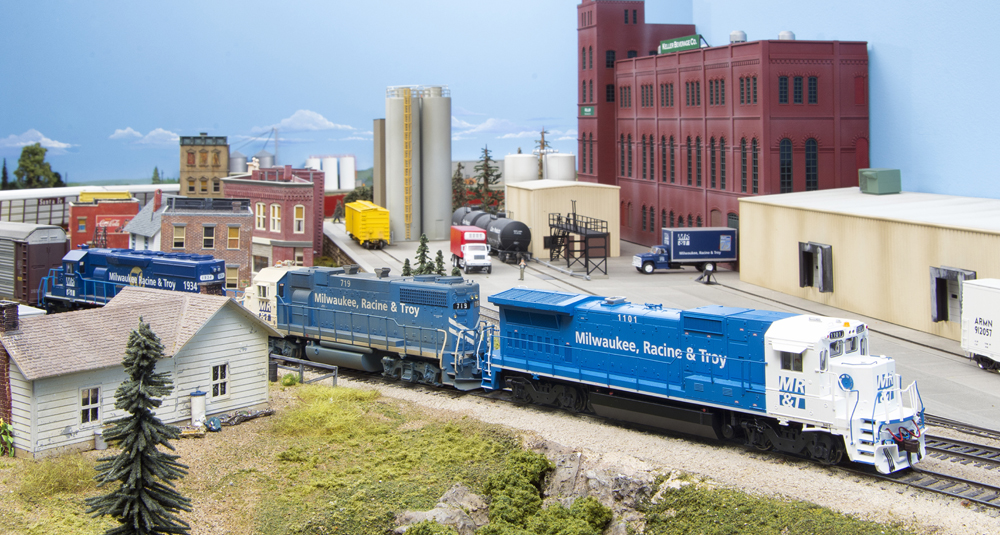
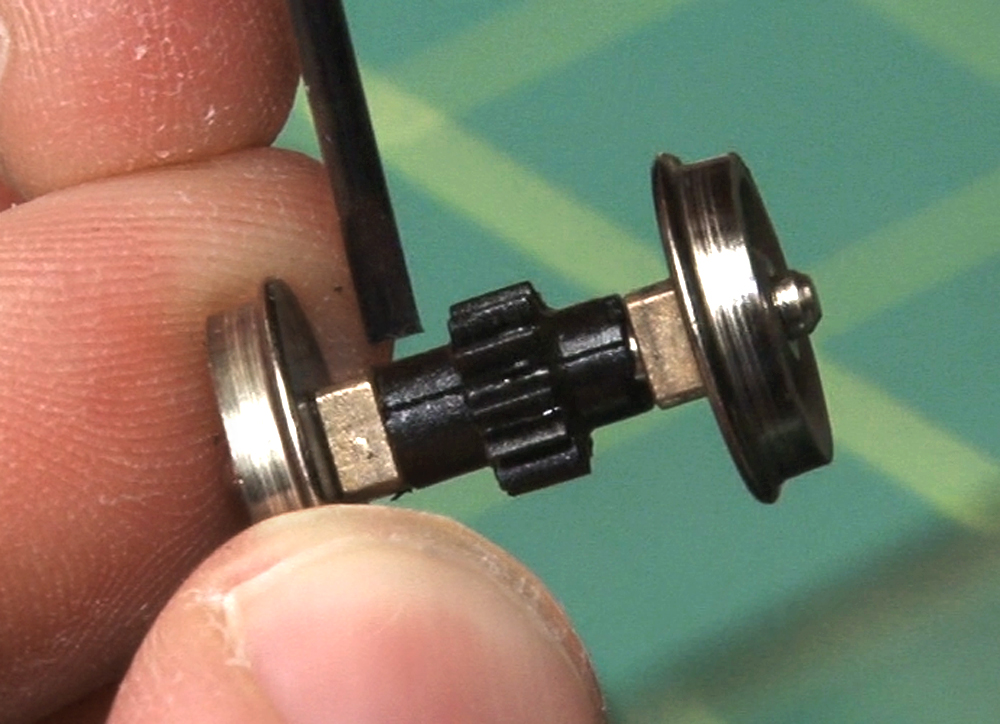
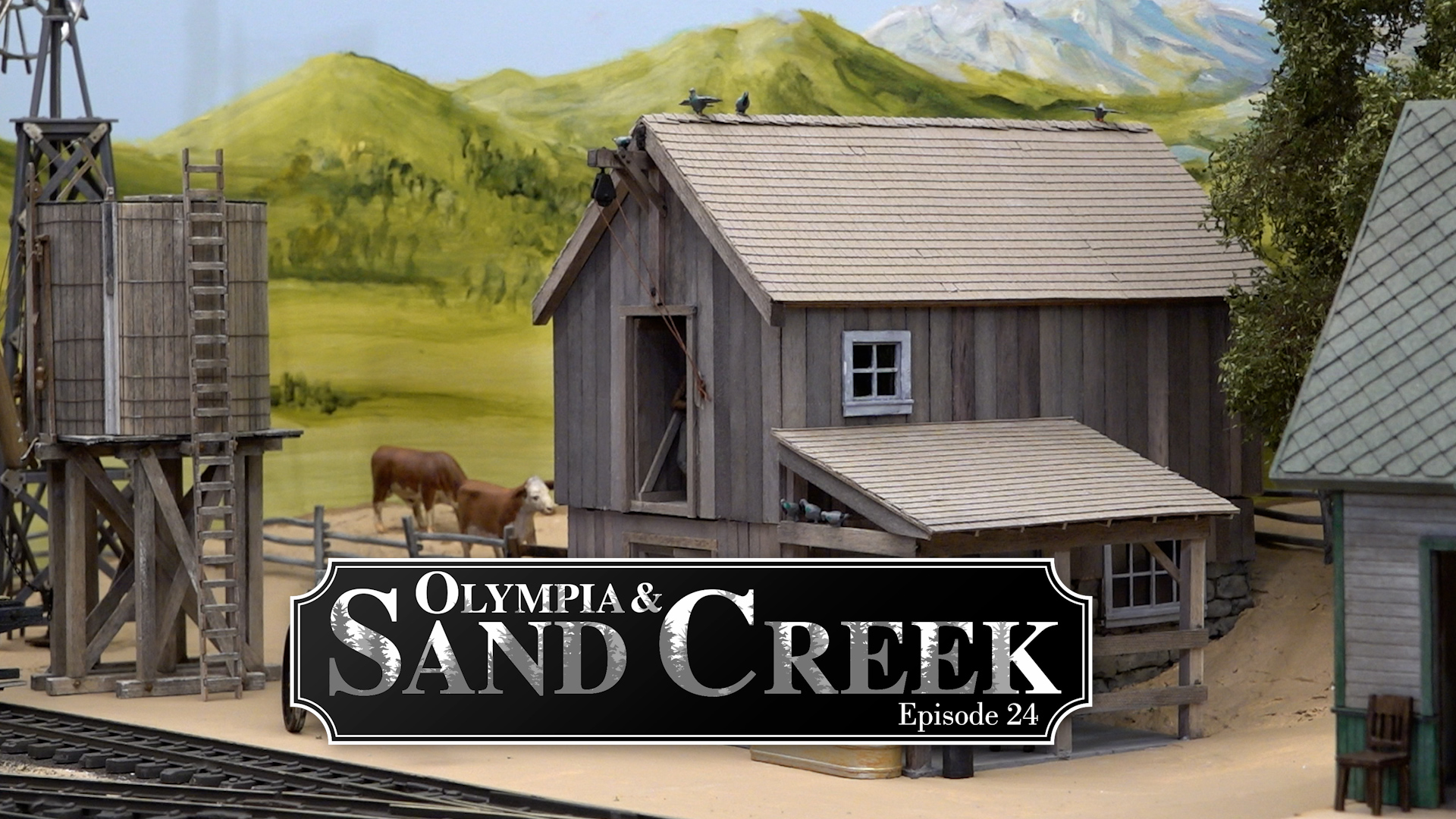




Nice, useful information. Thanks!